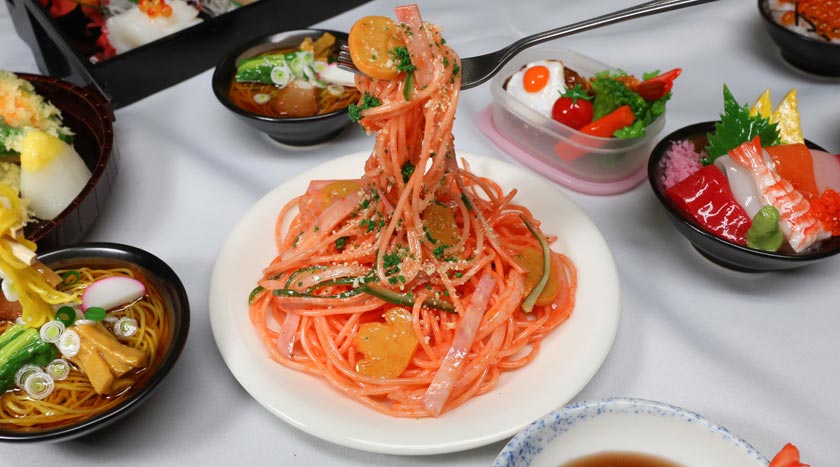Ramen, sushi, spaghetti and tempura… all made of plastic and completely inedible. Fake but realistic replicas of actual food are a part of daily life in Japan and can be found in the windows of restaurants all over the country. Many visitors to Japan are surprised by the level of perfection. Some people even go so far as to collect these delicately hand-crafted items.
Replica food collection puts even the most detailed menu to shame
One of the world’s most committed replica food enthusiasts is Akiko Obata. Obata, who lives near Narita Airport in Chiba Prefecture, set a Guinness World Record last year with her collection of 8,083 prepared food-related items. Her house is filled with colorful but unreal food.
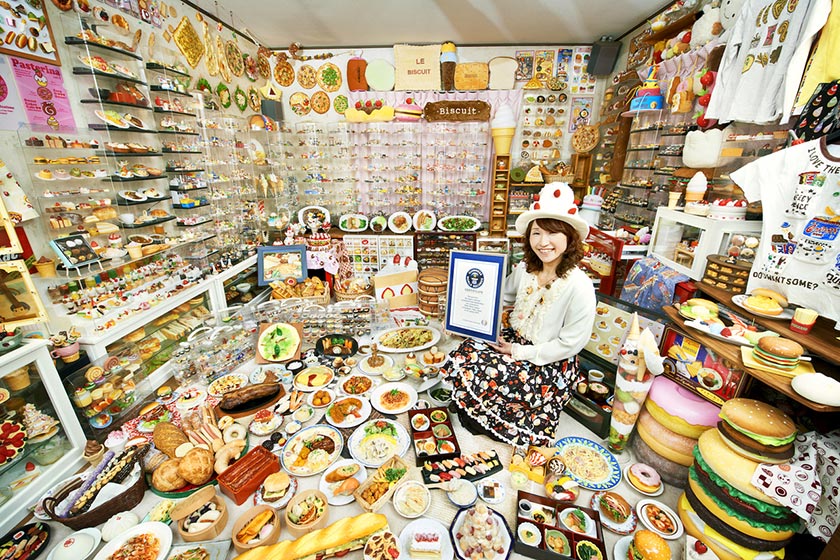
“It took a whole day to count everything with the people from Guinness World Records,” says Obata. The seeds of her obsession were sown 30 years ago when her sister brought home some no longer needed food samples from the restaurant where she worked. Her encounter with replicas of omelets, parfaits and flavored ice igniteda nascent passion that eventually drove her to amass a world-class collection.
Obata says that she appreciates the delicacy with which the craftspeople create plastic food. “Replicas are not real food, but I truly respect how each of them are made to look so real.”
How it all started
So when exactly did the tradition of replica food get its start in Japan? According to Iwasaki Co., a leading manufacturer of plastic food samples, the first replica food was made during the 1930s using wax. At the time, most major department stores in Japan included huge cafeterias on their upper floors, and food samples were used to introduce their menus in a visually attractive way. Eventually, vinyl replaced wax as the material of choice for food samples – a transition that set the table for greater expression and opened the pantry to a wider range of foods.
Crafting replicas
Many food sample makers are independent shops– the industry does not have a trade union. One such shop is Nagao Shokken, which is based in Tokyo and has five employees. Fumiyoshi Nagao, the company’s president, has been making food samples for more than three decades.
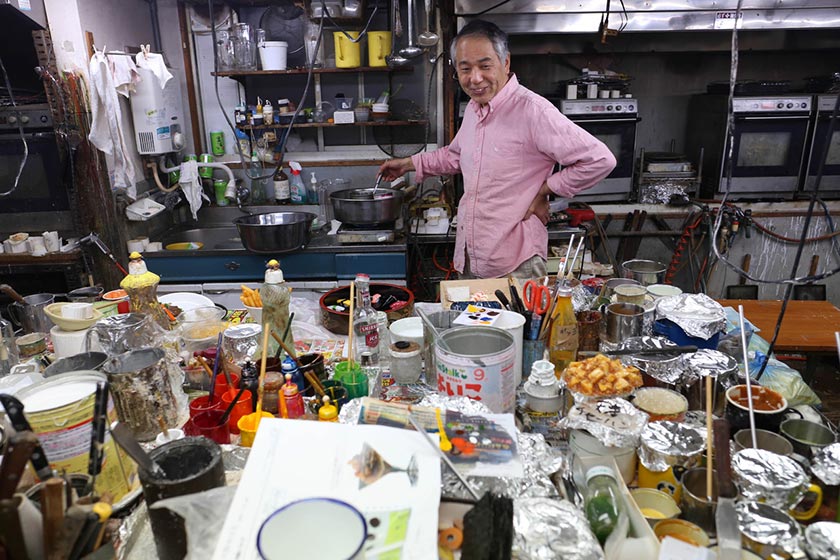
At his studio, Nagao showed us how to make replica tempura in the traditional way, using wax. As Nagao slowly pours cream-colored wax into water, the wax takes on the appearance of “batter.”He then quickly wraps the “batter” around fake shrimp and sliced eggplant that was prepared beforehand. Set on a plate, the “food” has the appearance of real tempura.
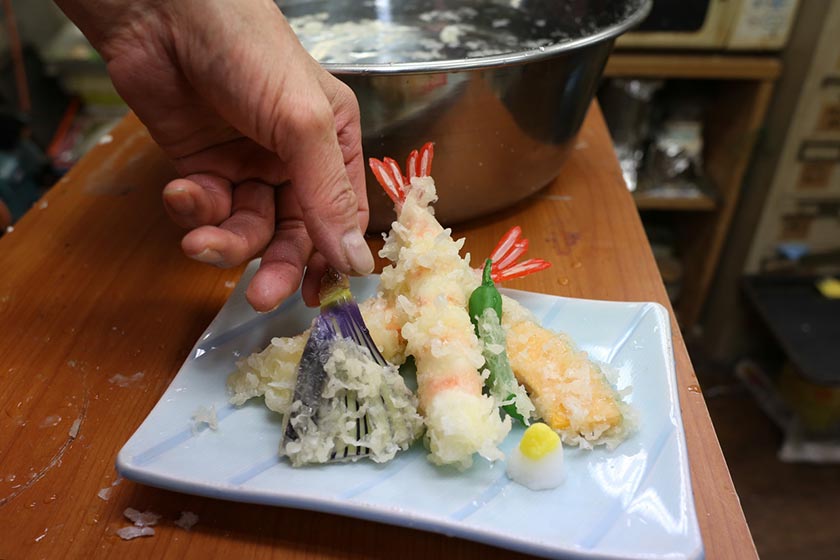
When Nagao first started out as a replica food craftsperson back in the 1960s, the Japanese economy was experiencing rapid growth and he was inundated with orders from restaurants in need of food samples. But as the economy slowed down, orders did too. Like others in the industry, Nagao sought out a new source of demand: the general public.
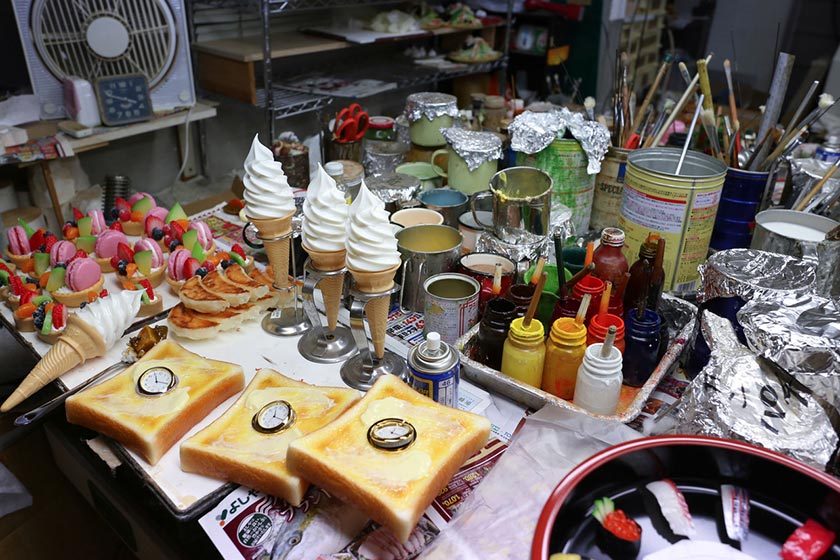
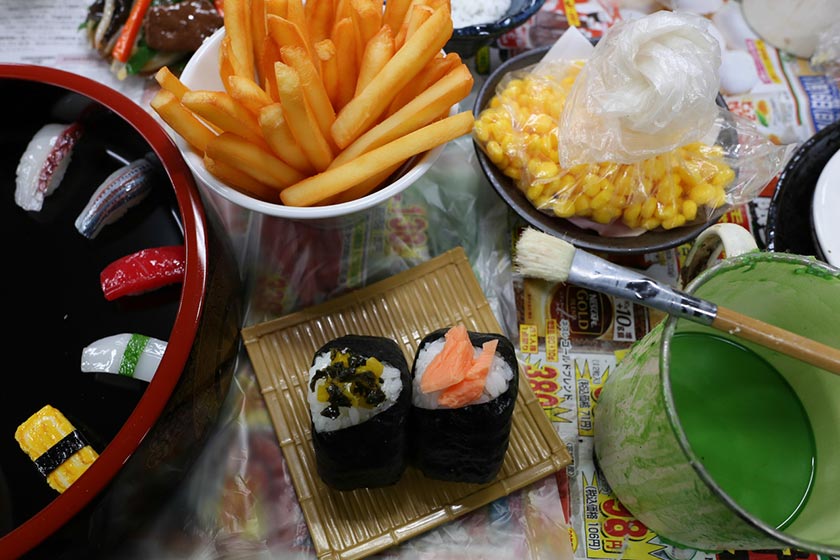
“In 1997, we started selling food samples on the internet – we also started to craft miniatures,” Nagao recalls. He says his products are “a bit different and unique” from the replicas found in other shops. As we look around his studio, we find various kinds of unusual plastic food waiting to be packaged and sold. A clock embedded in toast; memo stands that look like tarts; and key chains with peeled bananas. It’s easy to see how Nagao’s sense of humor is reflected in his products.
*For the moment, Nagao Shokken can only accept orders in Japanese language.

Replica food may be fake, but the craftsmanship is certainly genuine. That might explain why so many people are attracted to the world of phony food.
Written by Mamiko Nakano | Photos by Takaaki Iwabu
